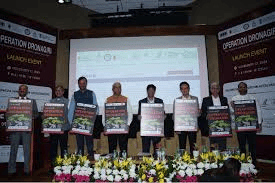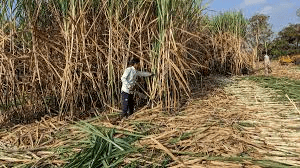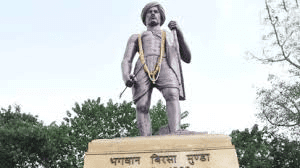UPSC Daily Current Affairs: 15th November 2024 | Current Affairs & Hindu Analysis: Daily, Weekly & Monthly PDF Download
GS2/International Relations
Will the End of SDS Visa Derail Indian Students’ Canadian Dreams?
Source: The Hindu

Why in News?
The Canadian government has recently terminated the Study Direct Stream (SDS) visa program, a decision that has far-reaching consequences for Indian students, who form one of the largest groups of international students in Canada. The SDS visa, which was introduced in 2018, aimed to streamline the visa application process for students from select countries, including India. With its discontinuation in November 2024, Indian students now confront longer processing times, increased fees, and a more complicated visa application procedure.
What Was the SDS Visa?
- The SDS visa program offered several advantages for qualifying international students:
- Faster Processing: The program allowed for expedited study permit applications for students who met specific eligibility criteria.
- Reduced Fees: Application costs were lower in comparison to standard study visas.
- Simplified Documentation: Fewer supporting documents were necessary, making the application process more straightforward.
- In 2022, over 189,000 Indian students utilized the SDS program, achieving an approval rate of 63%, contrasting sharply with the mere 19% approval for non-SDS applicants.
Why Was the SDS Visa Discontinued?
- The Canadian government provided several reasons for the cancellation of the SDS program:
- Abuse of the System: There were rising concerns that some applicants exploited the program to enroll in low-value diploma courses as a means to gain permanent residency.
- Housing Crisis: The increase in international students placed significant strain on Canada’s housing resources, especially in major urban areas.
- Resource Constraints: The influx of students heightened pressure on public services such as healthcare and transportation.
- Policy Shift: Canada is re-evaluating its immigration policies to ensure equitable access and maintain program integrity.
- Prime Minister Justin Trudeau remarked, “We’re granting 35% fewer international student permits this year, and next year, that number will decrease by another 10%.”
Impact on Indian Students:
- The termination of the SDS visa presents various challenges for Indian students:
- Longer Processing Times: Visa applications will now take more time to process, potentially disrupting academic schedules.
- Higher Fees: Standard visa applications now come with increased costs, adding to financial pressures.
- Complex Procedures: The regular visa process demands extensive documentation, including proof of funds, language proficiency certificates, and detailed study plans.
- These changes may result in delays in admissions, heightened financial burdens, and uncertainty about future immigration prospects, especially for students aiming to transition to permanent residency.
Options for Indian Students:
- Despite the discontinuation of the SDS visa, Indian students still have the option to apply for the standard Student Visa. To enhance their chances of approval:
- Plan Ahead: Initiate applications early to allow sufficient time for processing.
- Prepare Thorough Documentation: Ensure that all necessary documents, including proof of funds and admission letters, are accurately submitted.
- Consult Experts: Seek advice from immigration consultants to effectively navigate the application process.
GS3/Science and Technology
Operation Dronagiri
Source: PIB

Why in News?
Recently, the Secretary of the Department of Science and Technology inaugurated Operation Dronagiri at the Foundation for Innovation and Technology Transfer (FITT) located at the Indian Institute of Technology Delhi, New Delhi.
About Operation Dronagiri:
- Operation Dronagiri is a pilot initiative launched under the National Geospatial Policy 2022 aimed at showcasing the potential of geospatial technologies and innovations to enhance citizens' quality of life and facilitate business operations.
- This initiative is part of the broader efforts by the Department of Science and Technology (DST) to liberalize geospatial data, develop necessary infrastructure, and cultivate skills and knowledge regarding geospatial technologies, alongside establishing standards for policy implementation.
- In its initial phase, Operation Dronagiri will be rolled out in the states of Uttar Pradesh, Haryana, Assam, Andhra Pradesh, and Maharashtra.
- The project aims to demonstrate practical applications of integrated geospatial data and technology across three key sectors: Agriculture, Livelihoods, and Logistics and Transport.
- Collaboration will take place with various government departments, industries, corporations, and startups during the first phase, laying the groundwork for a nationwide rollout.
- Operation Dronagiri is supported by the Integrated Geospatial Data Sharing Interface (GDI), which will enhance accessibility to spatial data and drive transformative changes.
- The oversight of activities under Operation Dronagiri will be managed by the IIT Tirupati Navavishkar I-Hub Foundation (IITTNiF).
- Operational functions of the initiative will be facilitated by Geospatial Innovation Accelerators (GIAs) based at IIT Kanpur, IIT Bombay, IIM Calcutta, and IIT Ropar.
- The implementation will be spearheaded by the Geospatial Innovation Cell within the Department of Science and Technology.
GS3/Health
World Diabetes Day 2024
Source: NDTV

Why in News?
World Diabetes Day was recently observed to raise awareness about diabetes, its prevention, and management.
About World Diabetes Day:
- World Diabetes Day is celebrated globally on November 14 each year.
- This date marks the birthday of Sir Frederick Banting, who, along with Charles Best, co-discovered insulin in 1922, a medical breakthrough that has transformed the lives of millions living with diabetes.
- The theme for World Diabetes Day 2024 is 'Access to Diabetes Care: Empowering Better Health for All.'
- It was first established in 1991 by the International Diabetes Federation (IDF) and the World Health Organization (WHO) in response to growing concerns about the diabetes epidemic.
- In 2006, the United Nations officially recognized it, making it a global observance.
- This initiative sheds light on the challenges posed by diabetes, including the need for more accessible healthcare, and promotes awareness of lifestyle changes that can help reduce diabetes risk.
- World Diabetes Day is marked by various events including awareness campaigns, educational seminars, health check-ups, and fundraising activities.
- Blue Circle Monuments are illuminated worldwide as a symbol of unity in the fight against diabetes, and people are encouraged to wear blue to show their support.
What is Diabetes?
- Diabetes mellitus, commonly referred to as diabetes, is a metabolic disorder characterized by persistently elevated blood sugar levels.
- This chronic condition occurs when the body either produces insufficient insulin or cannot effectively utilize the insulin it does produce.
- The pancreas is responsible for secreting insulin, a hormone that plays a crucial role in regulating blood sugar levels.
- If insulin is not functioning properly, blood sugar levels can rise, leading to complications affecting the heart, kidneys, feet, and eyes.
GS3/Health
Makers of ‘Magic’ Weight-loss Drug Semaglutide Wants Copies Banned
Source:Indian Express

Why in news?
Novo Nordisk, a Danish pharmaceutical firm, has requested US authorities to halt the compounding of its well-known weight-loss medication, Wegovy, and the diabetes drug, Ozempic. The company argues that compounding these medications may lead to safety issues.
- Both Wegovy and Ozempic contain the active ingredient semaglutide, which has seen a surge in demand recently. In response, various compounding pharmacies in the United States have started producing their own versions to meet this rising need.
- The US Food and Drug Administration (FDA) permits the practice of human drug compounding. This allows licensed pharmacists or physicians to create customized medications by mixing or adjusting drug ingredients to fulfill patient requirements, particularly during shortages of popular commercial formulations.
Concerns Regarding Semaglutide
- Novo Nordisk has initiated at least 50 legal actions against clinics and pharmacies that have created compounded alternatives of its drugs over the past year.
- On October 22, the company urged the FDA to include semaglutide on the Demonstrable Difficulties for Compounding (DDC) list, a move that would limit pharmacies from compounding this medication.
- The FDA considers adding a drug to the DDC list based on several criteria, including its stability, dosage requirements, bioavailability, or the need for sterile handling, which complicates the creation of a safe and effective compounded version.
GS1/Indian Society
Sumi Naga Tribe
Source:Times of India

Why in News?
Ahuna, a post-harvest festival of the Sumi Naga tribe, was recently celebrated with a spirit of oneness.
About Sumi Naga Tribe:
- The Sumi, also known as Sema Naga, represent one of the prominent Naga tribes located in Nagaland.
- They primarily reside in the central and southern parts of Nagaland.
- Among the Naga tribes, the Sumis have the most extensive settlements.
Village Establishment:
- Compared to other Naga tribes, the Sumi tribe has a notable practice of establishing villages, a tradition that continues today.
Historical Practices:
- Historically, like many other Naga tribes, the Sumis engaged in headhunting prior to the arrival of Christian missionaries.
- The influence of missionaries led to significant changes in the lifestyle and beliefs of the Sumi people.
Language:
- The Sumi language belongs to the Tibeto-Burman language family.
Major Festivals:
Two significant festivals celebrated by the Sumi Nagas are Tuluni and Ahuna.
- Ahuna Festival:Ahuna is a traditional post-harvest festival that symbolizes gratitude for the harvest while seeking blessings for prosperity in the upcoming year.
- Tuluni Festival:The Tuluni festival marks the arrival of new crops and fruits, during which prayers are offered to express gratitude for the previous year's bountiful harvest.
GS3/Economy
India’s Tea, Sugar Exports Raise Sustainability Concerns
Source: The Hindu

Why in news?
The agricultural export sector in India reached a value of $53.1 billion in 2022-2023, significantly increasing from $8.7 billion in 2004-2005. This remarkable growth presents several challenges related to sustainability, particularly in the tea and sugar industries.
- Exports are vital for India's economy, enhancing revenue and foreign exchange opportunities.
Tea Industry Overview
- India stands as the fourth-largest exporter of tea globally, contributing to 10% of worldwide tea exports.
- The total export value of Indian tea for 2022-2023 was approximately $793.78 million.
- Challenges in the tea sector include:
- Management of human-wildlife interactions.
- Increasing reliance on chemicals in production.
- Labour issues, particularly concerning female workers, who comprise over half of the workforce and often receive inadequate wages.
- There is a pressing need for improved management practices around tea estates and stricter compliance with pesticide residue limits and labour laws.
Sugar Industry Overview
- India is the second-largest producer of sugar, with a production of 34 million metric tonnes, accounting for about one-fifth of the global output.
- From FY 2013-2014 to FY 2021-2022, sugar exports surged by 291%, rising from $1,177 million to $4,600 million.
- Approximately 50 million farmers rely on sugarcane cultivation, with an additional half a million employed in sugar-related factories.
- Sugarcane cultivation is water-intensive, requiring between 1,500 to 2,000 kg of water to produce 1 kg of sugar.
- The conversion of natural ecosystems to sugarcane plantations has led to biodiversity loss and increased strain on water resources.
- Issues such as poor working conditions, long hours, and the impact of rising temperatures exacerbate the challenges faced by sugar industry workers.
Millets: A Sustainable Alternative
- Despite the sustainability issues associated with tea and sugar, millets present a viable option for promoting ecological and socio-economic sustainability.
- Millets are resilient to harsh conditions and require fewer resources, contributing to soil health and nutritional security.
- In FY 2022-2023, India exported 169,049.11 metric tonnes of millets worth $75.45 million, indicating rising demand for this sustainable crop.
Conclusion
- The agricultural landscape in India is characterized by a large domestic consumption base alongside a rapidly growing export market.
- This dynamic presents opportunities for producers but may also lead to conflicts regarding ecological and social sustainability.
GS1/Indian Society
Birsa Munda’s Enduring Legacy
Source: Indian Express

Why in news?
Throughout history, exceptional individuals have emerged, profoundly influencing their societies and homelands. One such remarkable figure in India’s history is Bhagwan Birsa Munda. As we commemorate his 150th birth anniversary, it is crucial to reflect on his life, contributions, and the lasting impact of his legacy on Indian society.
Early Life of Birsa Munda and His Rise Against British Oppression
- Born in 1875 in Ulihatu, Jharkhand, Birsa Munda experienced a childhood overshadowed by British exploitation, which particularly affected tribal communities.
- Colonial forces and local landlords imposed severe conditions on tribal populations, seizing their lands and denying them fundamental rights.
- Like Mahatma Gandhi, Birsa Munda was driven by ideals of truth and justice, encouraging his people to unite against injustice with resilience.
Ulgulan: A Fight for Justice and Cultural Identity
- In his twenties, Birsa Munda courageously led the Ulgulan, or the Munda Rebellion, against colonial exploitation.
- His movement was not only a struggle for justice but also aimed at preserving tribal identity and cultural values.
- The Ulgulan exemplified the historical fight against oppression while emphasizing the cultural strength of tribal communities.
- Birsa’s philosophy transcended mere political freedom; it served as a declaration of cultural identity and a reaffirmation of the traditions that shaped tribal life.
- His ideals continue to resonate, reminding us of the importance of preserving indigenous knowledge and values in a rapidly modernizing world.
Compassionate Leader and Healer
- Birsa Munda was not only a revolutionary but also a revered healer and spiritual leader.
- He was trained in healing practices and dedicated his life to caring for the sick, traveling from village to village to offer his services.
- His compassion and dedication endeared him to his community, solidifying his reputation as a protector and caregiver, embodying leadership characterized by empathy and solidarity.
Renewed Recognition of Birsa Munda’s Contribution and Lessons for Modern Society
- For many years, Birsa Munda’s contributions were largely overlooked in mainstream historical narratives.
- However, as the nation observes Azadi ka Amrit Mahotsav, or the 75th anniversary of India’s independence, there is a renewed appreciation for heroes like Munda, whose sacrifices were pivotal to India's freedom struggle.
- In 2021, the Indian government declared November 15 as Janjatiya Gaurav Divas to honor the contributions of tribal freedom fighters.
- This commemoration brings tribal resistance history to the forefront, recognizing the vital role of leaders like Birsa Munda in shaping India’s past.
- Today, Birsa Munda’s legacy imparts significant lessons for contemporary society, emphasizing harmonious living with nature and the sustainable values inherent in tribal societies.
- His life serves as a reminder that tribal communities have historically prioritized collective welfare over individual gain, an ethos modern society can adopt in its pursuit of sustainable development.
Government of India’s Efforts to Uplift the Tribal Community
- Dharti Aaba Janjatiya Gram Utkarsh Abhiyan: This initiative aims to improve living standards in approximately 63,000 tribal villages, focusing on social infrastructure such as education, healthcare, and sanitation.
- Pradhan Mantri Janjati Adivasi Nyaya Maha Abhiyan (PM-JANMAN): This program identifies 11 critical interventions to enhance welfare initiatives for Scheduled Tribes, addressing health, education, and employment challenges.
- Van Dhan Yojna: This scheme promotes skill development and employment for tribal youth, enhancing the value of forest produce and fostering entrepreneurship among tribal communities.
- Janjatiya Darpan Gallery and Janjatiya Gaurav Divas: The establishment of this gallery at Rashtrapati Bhavan Museum highlights the art and contributions of tribal communities, celebrating their role in nation-building.
- Education-Focused Programs: The government is implementing education initiatives to ensure tribal children have access to quality education, including residential schools and scholarships aimed at promoting gender equity in education.
- Healthcare Related Programs: Addressing unique health challenges faced by tribal populations, the government is expanding programs focusing on malnutrition and access to healthcare facilities, especially for Particularly Vulnerable Tribal Groups (PVTGs).
Conclusion
Birsa Munda’s legacy urges us to strive for a just and compassionate society that cherishes cultural heritage, collective welfare, and sustainable harmony with nature. As India continues to honor his contributions and those of countless tribal leaders, the nation reaffirms its commitment to preserving the rich cultural diversity that characterizes India. Embracing the lessons from Birsa Munda's life brings us closer to a vision of inclusive development, where every community, including historically marginalized groups, plays a celebrated role in the national narrative.
GS2/Governance
MATES Scheme
Source: Business Standard

Why in News?
Australia has introduced a new initiative known as the MATES Scheme, designed to allow skilled young individuals from India to gain work experience in the country for a limited period.
About the MATES Scheme:
- The MATES (Mobility Arrangement for Talented Early-professionals Scheme) provides Indian university graduates and early-career professionals the opportunity to work in Australia for up to two years.
Background:
- This scheme is part of the Migration and Mobility Partnership Arrangement (MMPA) established between Australia and India.
- The MMPA is a bilateral agreement that facilitates mutual migration and mobility while addressing concerns related to illegal and irregular migration.
- The MATES Scheme is set to start for professionals in December of this year.
Eligibility Criteria:
- The scheme is aimed at Indian nationals aged 30 or younger at the time of application.
- Applicants must not have previously participated in the MATES Scheme.
- Proficiency in English is required, with an overall IELTS score of at least 6, ensuring no module score is below 5.
- Graduates must have obtained their degree within the last two years from an accredited educational institution at the time of application.
- Eligible qualifications include a Bachelor's degree or higher in fields such as renewable energy, mining, engineering, Information Communications Technology (ICT), Artificial Intelligence (AI), Financial Technology (FinTech), or Agricultural Technology (AgriTech).
- Graduates from the top 100 universities in India, as per the National Institutional Ranking Framework (NIRF) ranking for 2024, will qualify for this scheme.
Program Features:
- MATES participants will be allowed to live and work in Australia for a duration of up to two years.
- The program will initially operate as a pilot with 3,000 primary applicant slots available each year.
- Participants can apply to bring dependents, such as spouses and dependent children, who will have work rights in Australia and will not count against the annual cap.
- Visa holders have a 12-month window to make their initial entry into Australia and can remain in the country for 24 months from their first entry date.
- The visa will permit multiple entries into Australia during this period.
GS3/Economy
What are Domestic Systemically Important Banks (D-SIBs)?
Source:The Hindu
Why in News?
State Bank of India, HDFC Bank, and ICICI Bank have once again been recognized as Domestic Systemically Important Banks (D-SIBs) by the Reserve Bank of India.
About Domestic Systemically Important Banks (D-SIBs):
- D-SIBs are financial institutions that are deemed too large to fail.
- According to the RBI, banks are considered systemically important due to various factors such as:
- Size of the bank
- Cross-jurisdictional activities
- Complexity of operations
- Lack of substitute options in the market
- Interconnections with other financial entities
- The failure of any D-SIB can lead to significant economic disruptions and panic across the country.
- Given their importance, it is expected that the government will intervene to support these banks during times of economic crises to prevent widespread damage.
- D-SIBs are subject to a different set of regulatory standards aimed at addressing:
- Systemic risks
- Moral hazard issues
- Due to their designation, D-SIBs may enjoy certain advantages in terms of funding opportunities.
- The concept of D-SIBs was introduced following the 2008 financial crisis, which highlighted the risks posed by large financial institutions.
How are D-SIBs determined?
- Since 2015, the RBI has released a list of D-SIBs annually.
- These banks are categorized into five buckets based on their significance to the national economy.
- A bank must have assets exceeding 2% of the national GDP to be classified as a D-SIB.
- Currently, three banks in India are classified as D-SIBs: SBI, HDFC Bank, and ICICI Bank.
- ICICI Bank and HDFC Bank are placed in bucket one, while SBI falls under bucket three, with bucket five representing the most critical D-SIBs.
What regulations do these banks need to follow?
- Due to their national importance, D-SIBs are required to maintain a higher proportion of risk-weighted assets as Tier-I equity.
- SBI, categorized in bucket three, must maintain an Additional Common Equity Tier 1 (CET1) at 0.60% of its Risk-Weighted Assets (RWAs).
- In contrast, ICICI Bank and HDFC Bank, being in bucket one, are required to maintain Additional CET1 at 0.20% of their RWAs.
GS2/Governance
AFSPA Back in Six Violence-hit Areas of Manipur
Source: Indian Express

Why in News?
The Union Home Ministry has reintroduced the Armed Forces (Special Powers) Act (AFSPA) in specific areas of Manipur following a resurgence of ethnic violence. This declaration covers six police station jurisdictions across five districts, designating them as "disturbed areas." The AFSPA had previously been lifted from these regions in April 2022 due to an improvement in the security situation, but the recent notification from the Home Ministry reinstates the Act in response to ongoing unrest.
- The Armed Forces Special Powers Act (AFSPA) is legislation that empowers the Indian Armed Forces to maintain public order in regions identified as "disturbed areas." This law was established with the aim of addressing situations of insurgency, militancy, or internal disturbances within certain regions.
Historical Background of AFSPA
- The AFSPA was first enacted in 1958, primarily to tackle insurgencies in the Northeast, focusing initially on Nagaland.
- Over the years, the Act has been extended to other regions, including Jammu & Kashmir in 1990 and various other Northeastern states.
Designation of Disturbed Areas
- The Act authorizes either the central or state government to classify an area as "disturbed" when it is facing insurgency or significant conflict.
Special Powers Granted to Armed Forces
- Search and Arrest: Armed forces personnel are entitled to arrest individuals without a warrant and conduct searches of premises to apprehend suspects or recover weapons.
- Shoot to Kill: The armed forces may use lethal force if they believe that an individual poses a threat to law and order, provided that they have issued due warning beforehand.
Legal Protections for Armed Forces
- The Act provides immunity to individuals acting under its provisions; no legal proceedings can be initiated against them without prior approval from the Central Government for actions taken under this Act.
|
38 videos|5269 docs|1114 tests
|
FAQs on UPSC Daily Current Affairs: 15th November 2024 - Current Affairs & Hindu Analysis: Daily, Weekly & Monthly
| 1. What is the SDS Visa program and how does it benefit Indian students? |  |
| 2. What impact will the end of the SDS Visa program have on Indian students wishing to study in Canada? |  |
| 3. Are there any alternatives for Indian students if the SDS Visa program ends? |  |
| 4. What are the main reasons for the potential discontinuation of the SDS Visa program? |  |
| 5. How can Indian students prepare for potential changes in the SDS Visa program? |  |
















